Measuring Pleated Knitted Sensors †
Abstract
:1. Introduction
2. Material and Knitting Techniques
3. Measurement Setup
4. Results
5. Conclusions
Institutional Review Board Statement
Informed Consent Statement
Data Availability Statement
References
- Deleuze, G. The Fold, 3rd ed.; The Athlone Press: London, UK, 1993. [Google Scholar]
- Smelik, A. Gilles Deleuze: Bodies-without Organs in the Folds of Fashion. In Thinking Through Fashion; Rocamora, A., Smelik, A., Eds.; Bloomsbury Publishing: London, UK, 2018; pp. 165–183. [Google Scholar]
- Liang, A.; Stewart, R.; Bryan-Kinns, N. Analysis of sensitivity, linearity, hysteresis, responsiveness, and fatigue of textile knit stretch sensors. Sensors (Switzerland) 2019, 19, 3618. [Google Scholar] [CrossRef] [PubMed]
- Qureshi, W.; Guo, L.; Peterson, J.; Berglin, L.; Skrifvars, M. Knitted Wearable Stretch Sensor for Breathing Monitoring Application. In Proceedings of the Ambience’11, Borås, Sweden, 28–30 November 2011. [Google Scholar]
- Qiu, P.Z. Importance of Home-Based, Self-Monitoring Devices and the Role of Pressure-Sensing Socks in Diabetic Foot Ulceration Prevention; Preliminary Report; Department of Design Engineering, Imperial College London: London, UK, 2020. [Google Scholar]
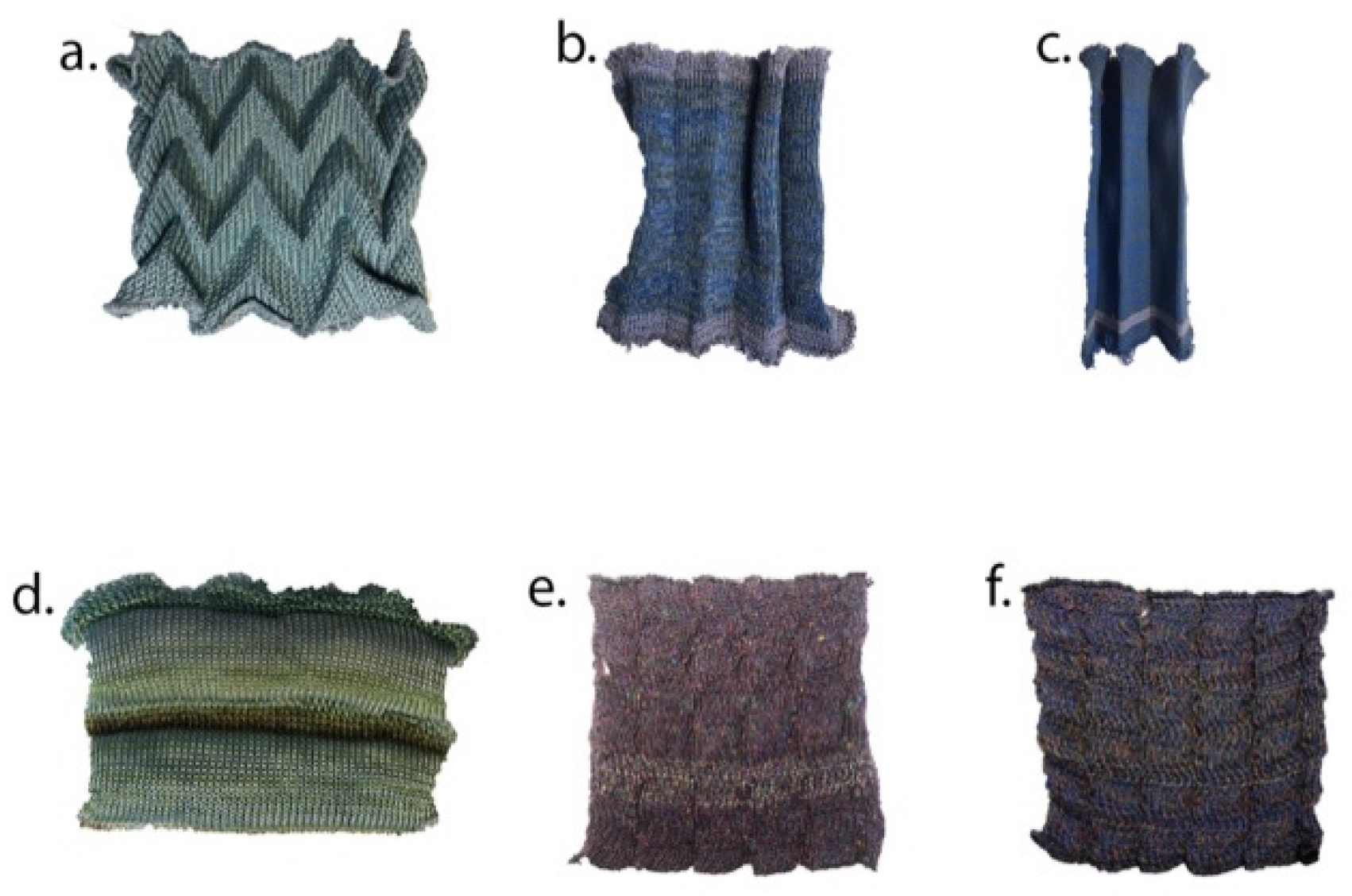


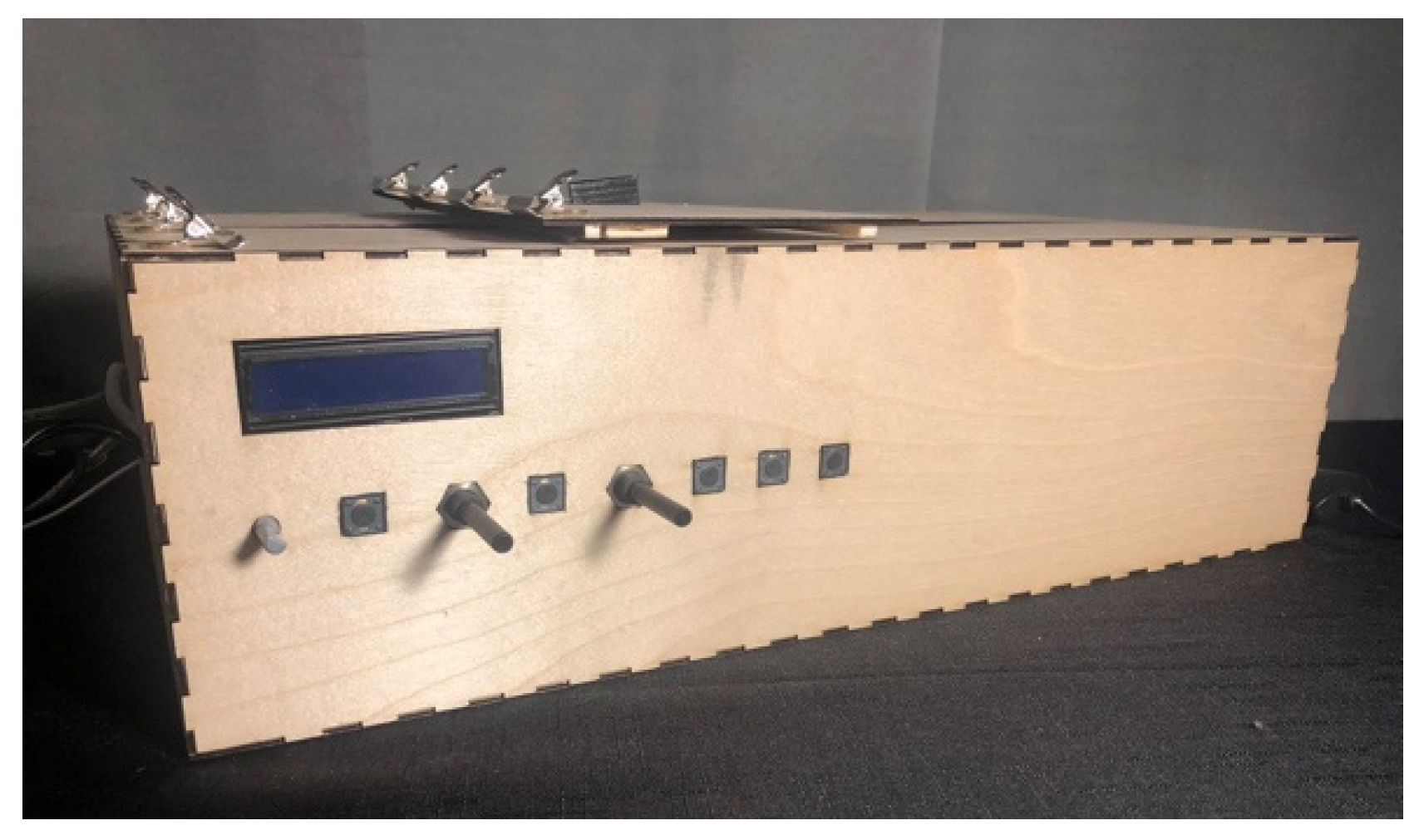
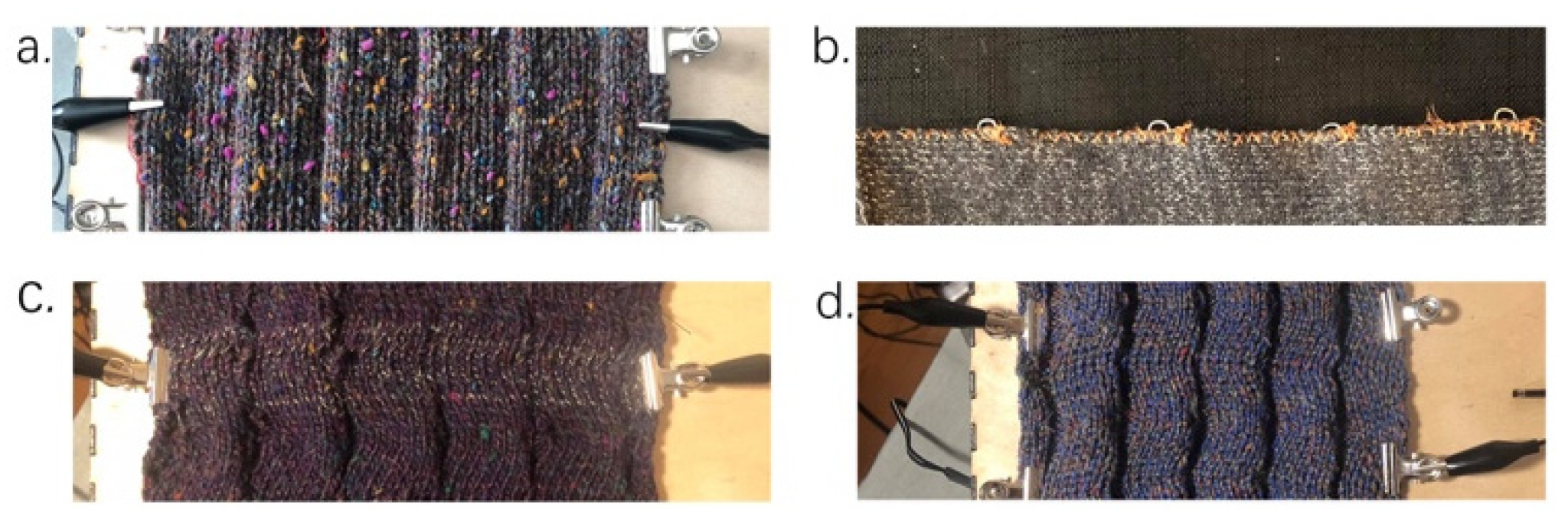
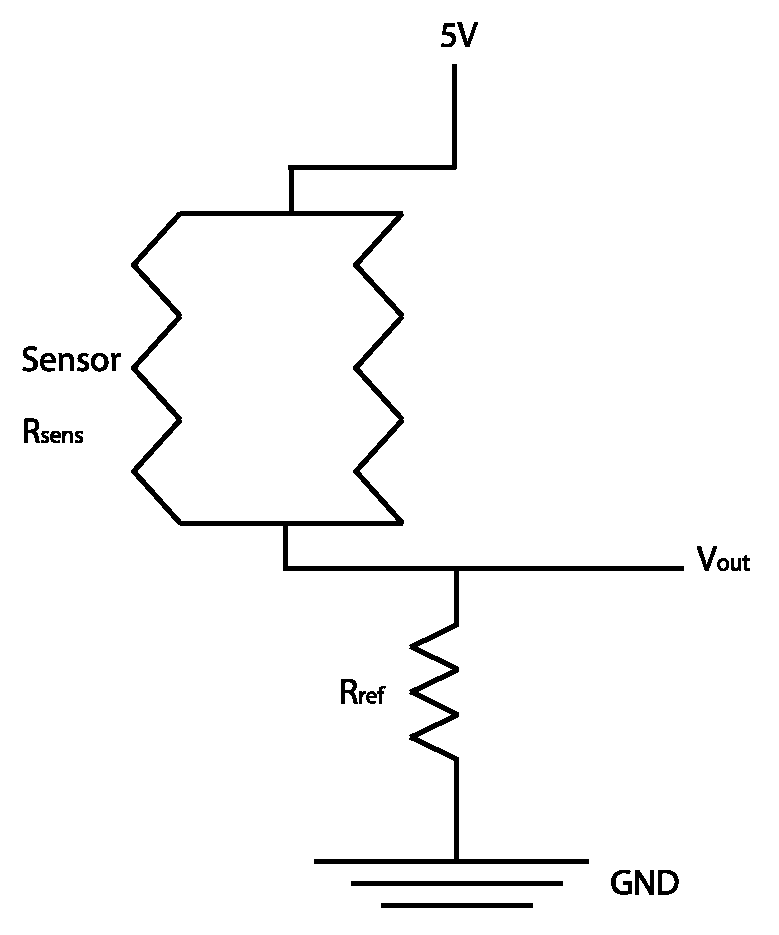



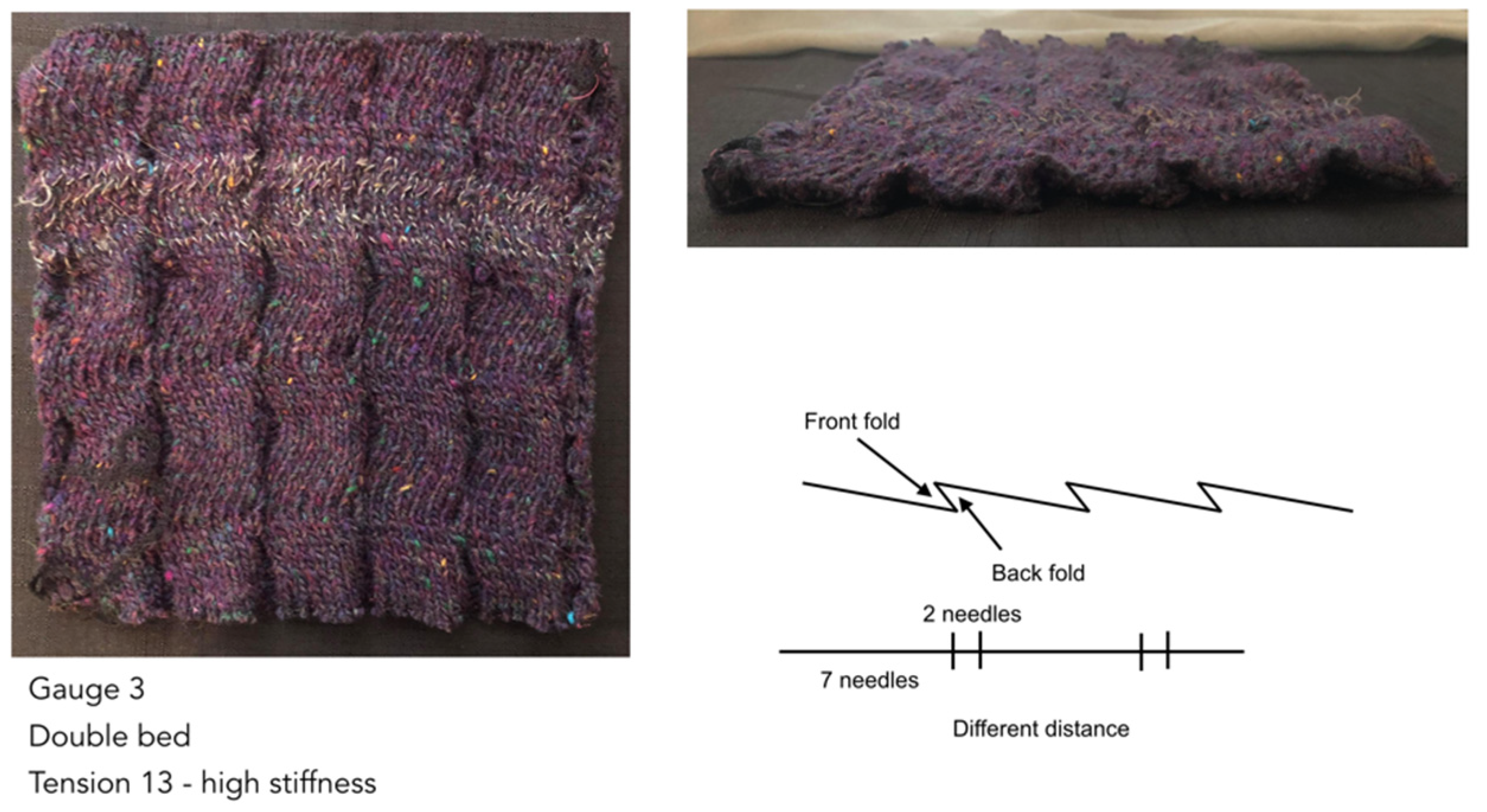


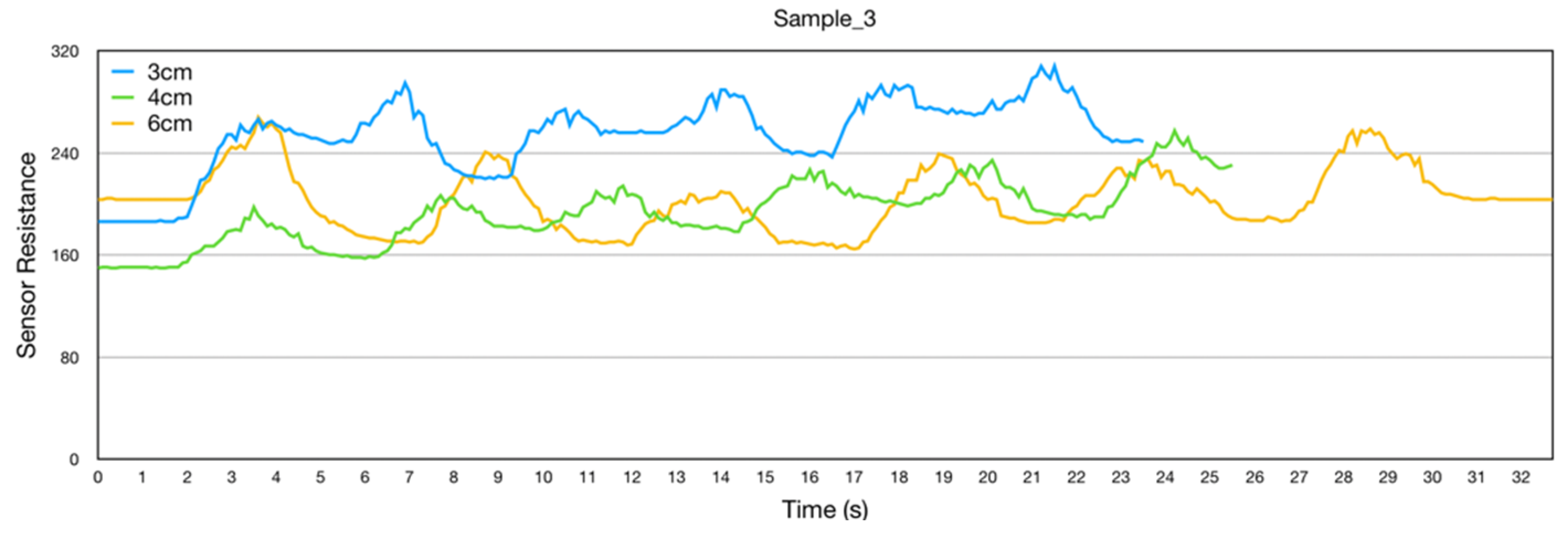
Publisher’s Note: MDPI stays neutral with regard to jurisdictional claims in published maps and institutional affiliations. |
© 2021 by the authors. Licensee MDPI, Basel, Switzerland. This article is an open access article distributed under the terms and conditions of the Creative Commons Attribution (CC BY) license (https://creativecommons.org/licenses/by/4.0/).
Share and Cite
Petri, G.; Greinke, B. Measuring Pleated Knitted Sensors. Proceedings 2021, 68, 10. https://doi.org/10.3390/proceedings2021068010
Petri G, Greinke B. Measuring Pleated Knitted Sensors. Proceedings. 2021; 68(1):10. https://doi.org/10.3390/proceedings2021068010
Chicago/Turabian StylePetri, Giorgia, and Berit Greinke. 2021. "Measuring Pleated Knitted Sensors" Proceedings 68, no. 1: 10. https://doi.org/10.3390/proceedings2021068010
APA StylePetri, G., & Greinke, B. (2021). Measuring Pleated Knitted Sensors. Proceedings, 68(1), 10. https://doi.org/10.3390/proceedings2021068010



